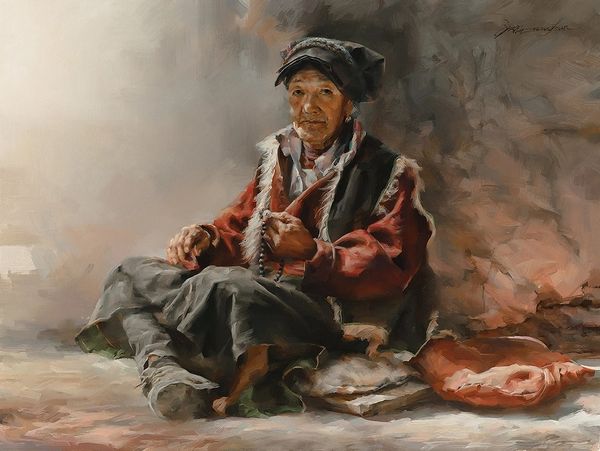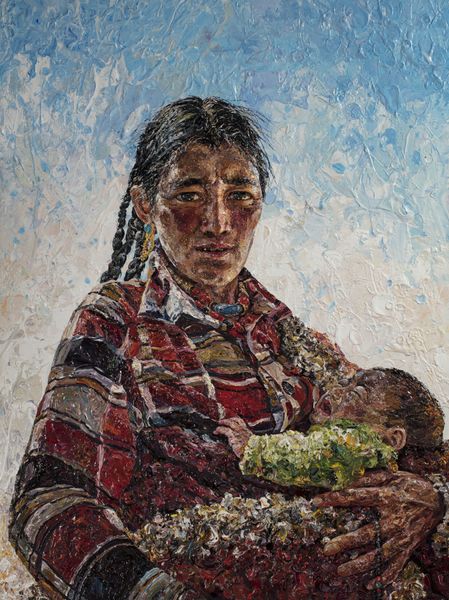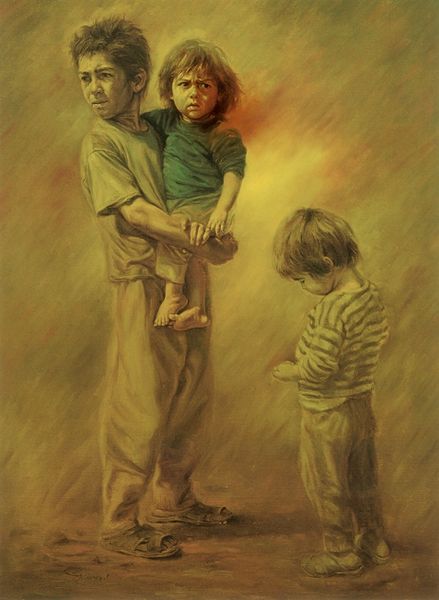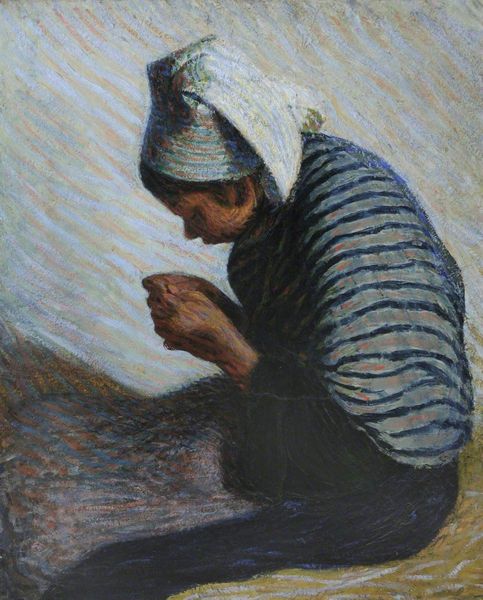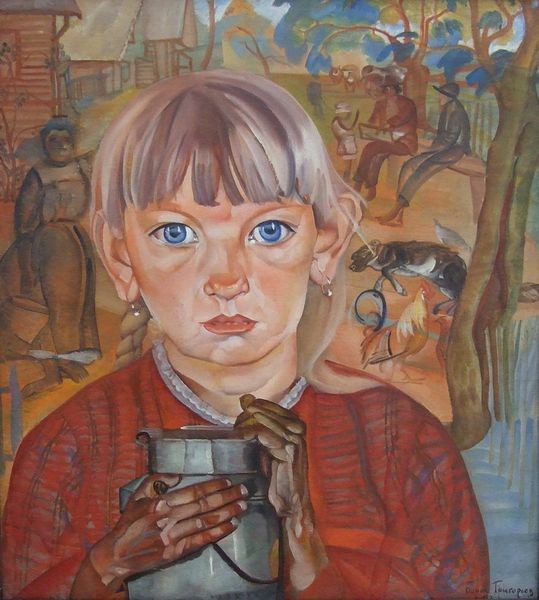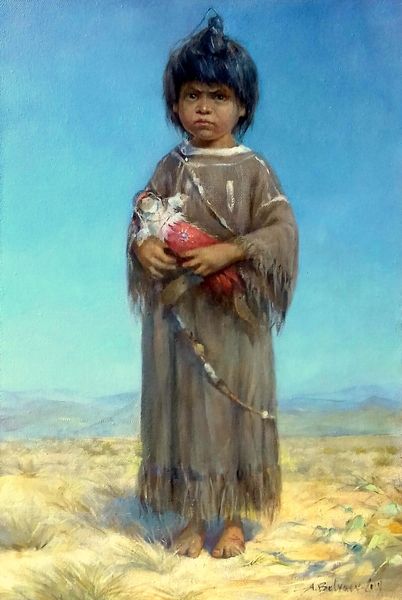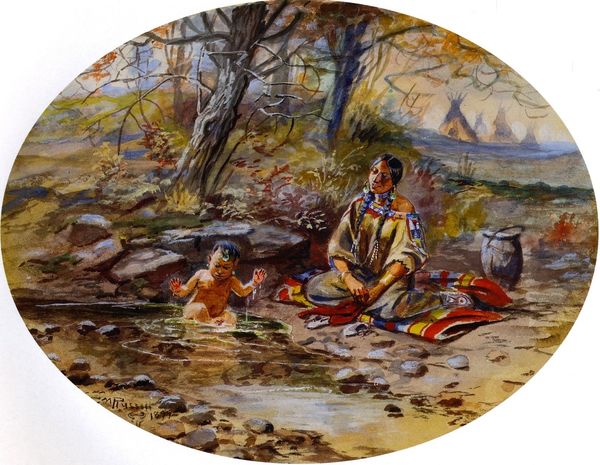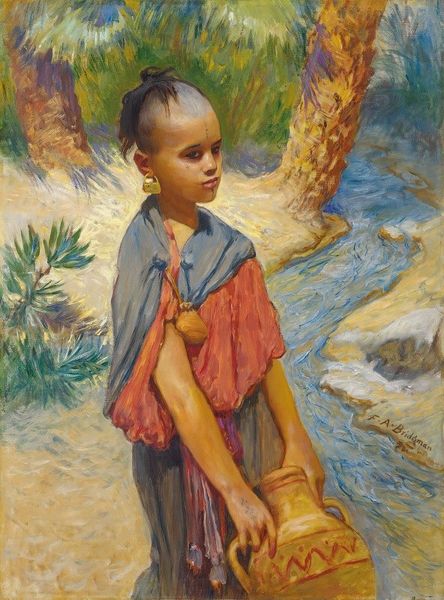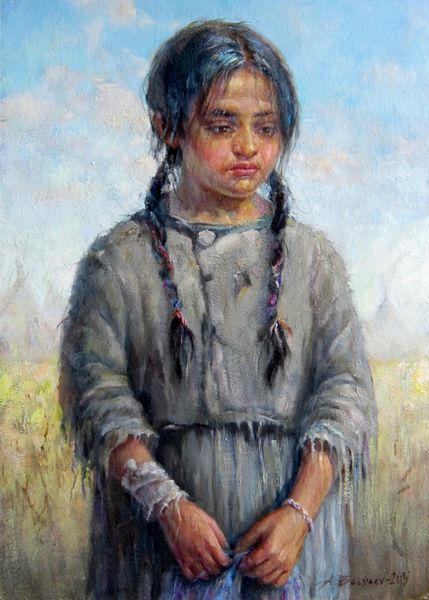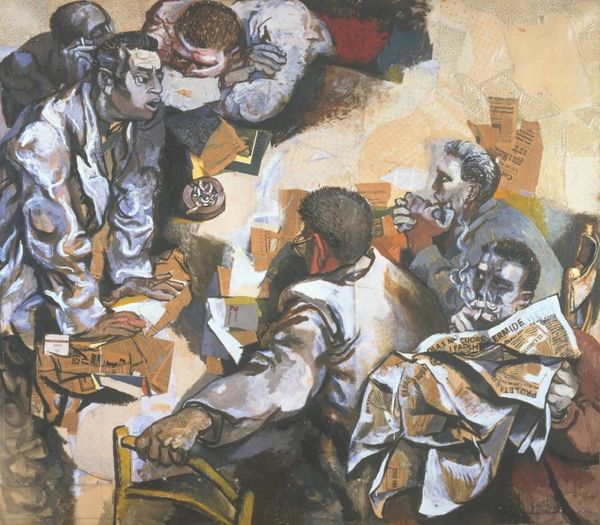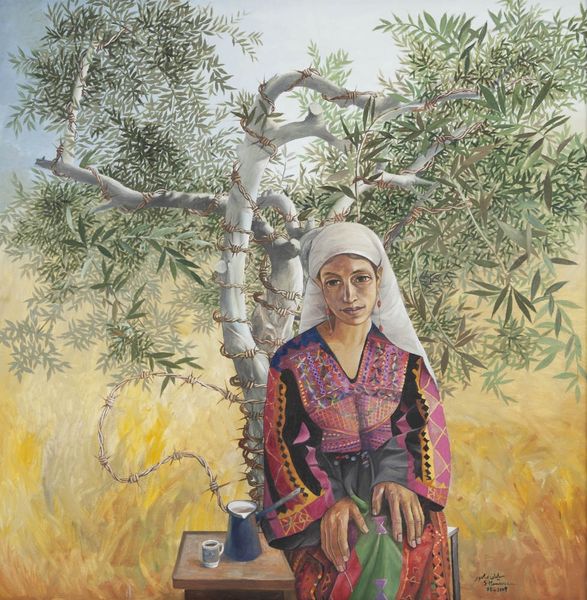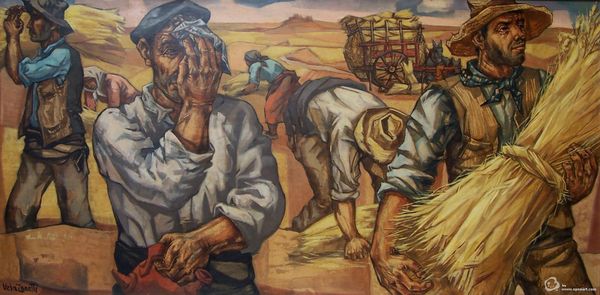
oil-paint
#
portrait
#
oil-paint
#
charcoal drawing
#
oil painting
#
orientalism
#
genre-painting
#
academic-art
#
portrait art
#
fine art portrait
#
realism
Dimensions: 27.5 x 24.5 cm
Copyright: Public domain
Curator: Here we see Nasreddine Dinet's oil painting titled "Young Boy with a Fennec," an excellent example of orientalist and academic art. Editor: The overwhelming impression is tenderness. A young boy cradling a Fennec fox, both seeming a little lost in their shared vulnerability. Curator: Dinet was deeply invested in representing North African life with empathy. He even converted to Islam and lived in Algeria for many years. Look at the care with which he captures the boy's features, and the equally detailed depiction of the Fennec's delicate form. The monochrome tones serve to enhance this contrast. Editor: It's precisely this gaze, the empathetic but still distanced view, that complicates things for me. Even with good intentions, an artist like Dinet participates in the power dynamics of representation. Who gets to tell whose story, and how? The fennec fox, small and fragile, and the young boy, perhaps embodying the stereotype of indigenous innocence. How much is our view shaped by these pre-existing narratives? Curator: These are valid concerns to consider, particularly regarding Orientalism's impact. But in considering symbolism, the boy might also represent youthful vigor and resourcefulness, a symbiotic connection to the desert itself, embodied by the Fennec. The animal might stand for adaptation, stealth, even wisdom beyond its size, qualities reflected in the boy. Editor: Perhaps. And yet I see a certain melancholy here. The muted colors, the boy's almost guarded expression, the wildness of the desert tamed, if only momentarily, within his grasp. What does it mean for the fox's destiny and the boy's? What freedoms do they possess, and what will their futures entail? Curator: Dinet, as an orientalist painter, sought to preserve what he believed was an authentic representation of Algerian life. We, generations later, are left to decipher that. What is preserved and what is irretrievably lost through cultural translation? Editor: I find myself questioning whether our contemporary readings perpetuate these ingrained systems. How do we see past the romanticized and, arguably, colonially tinged lens that informs our experience of this picture? How do we see them?
Comments
No comments
Be the first to comment and join the conversation on the ultimate creative platform.
